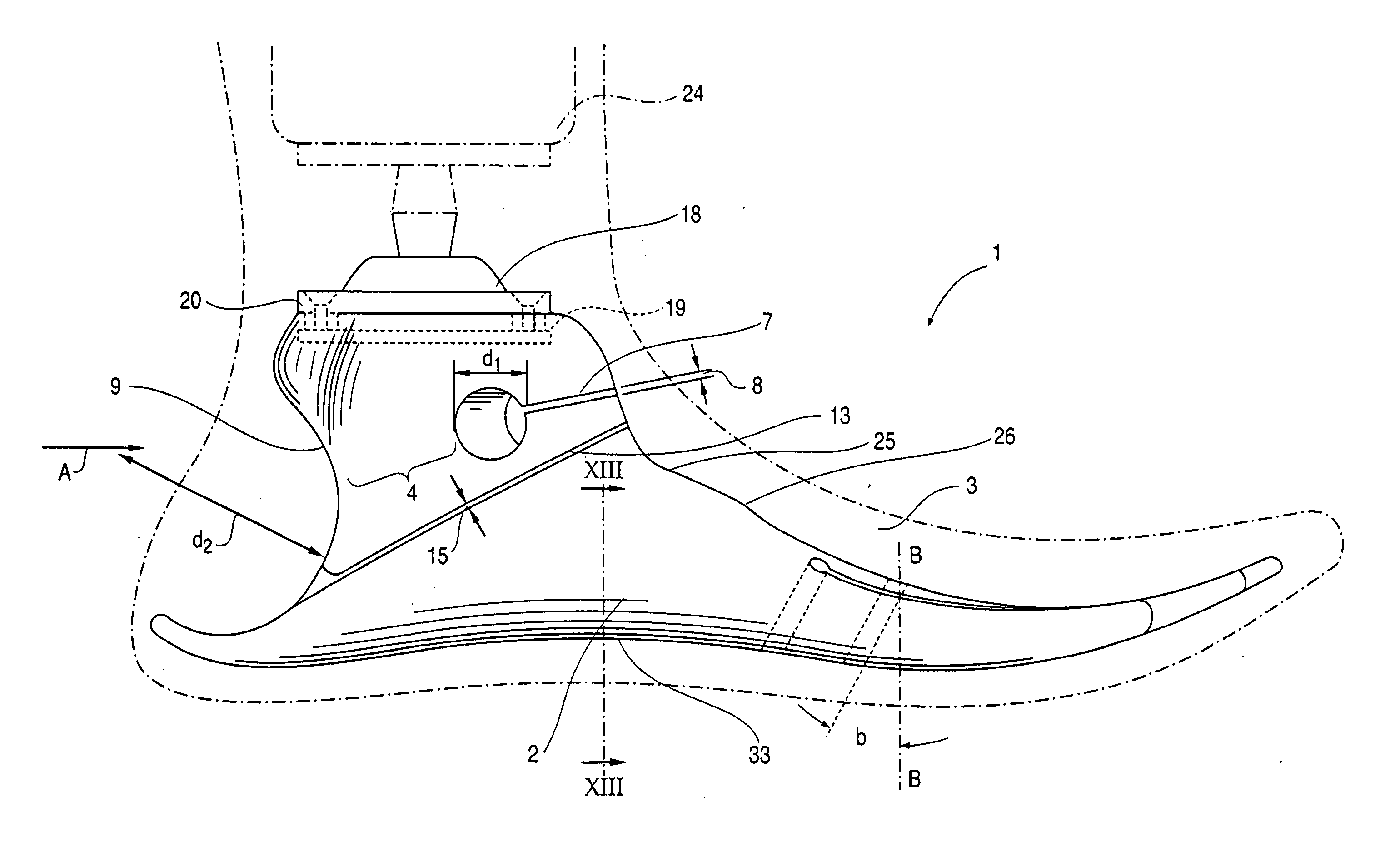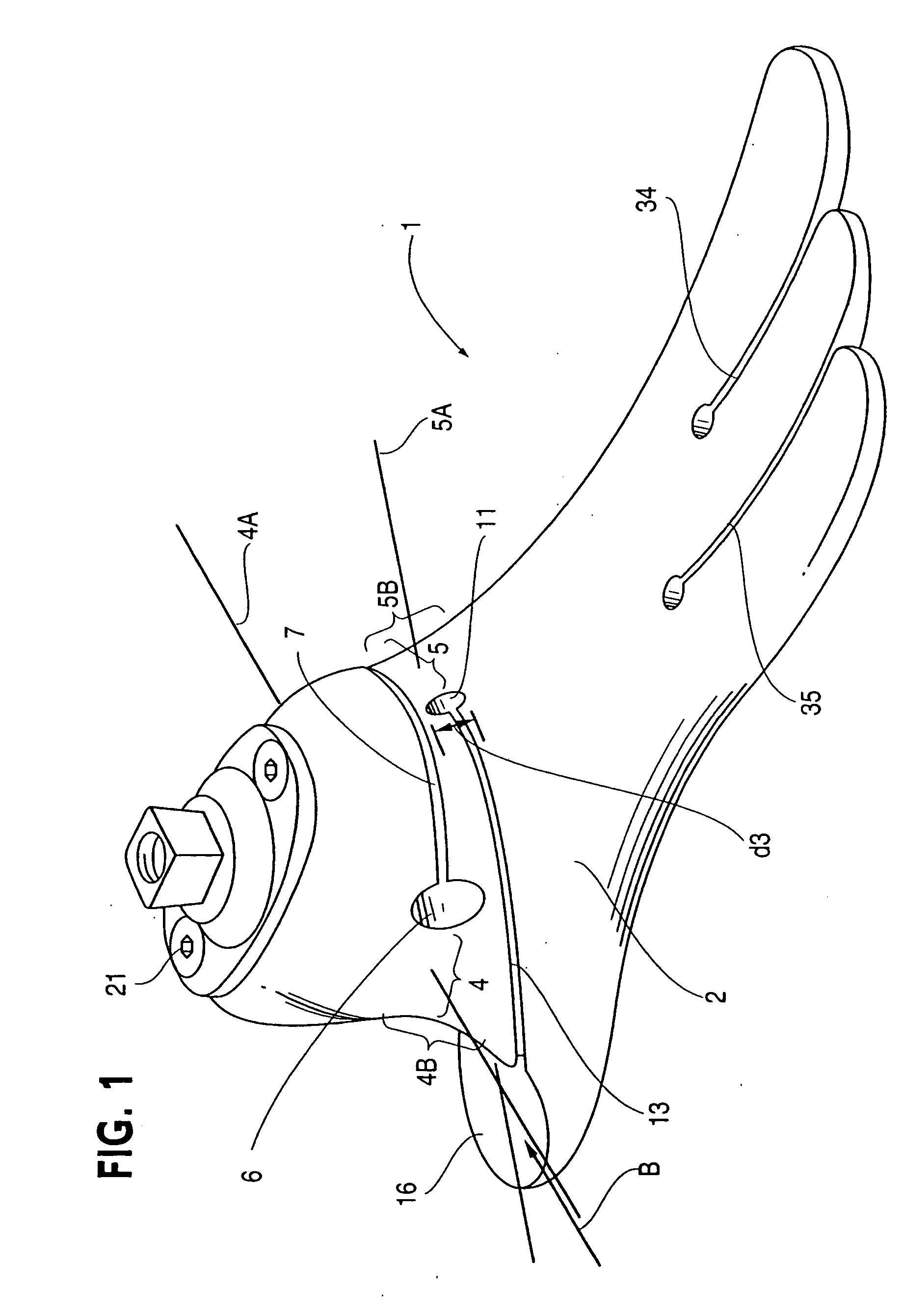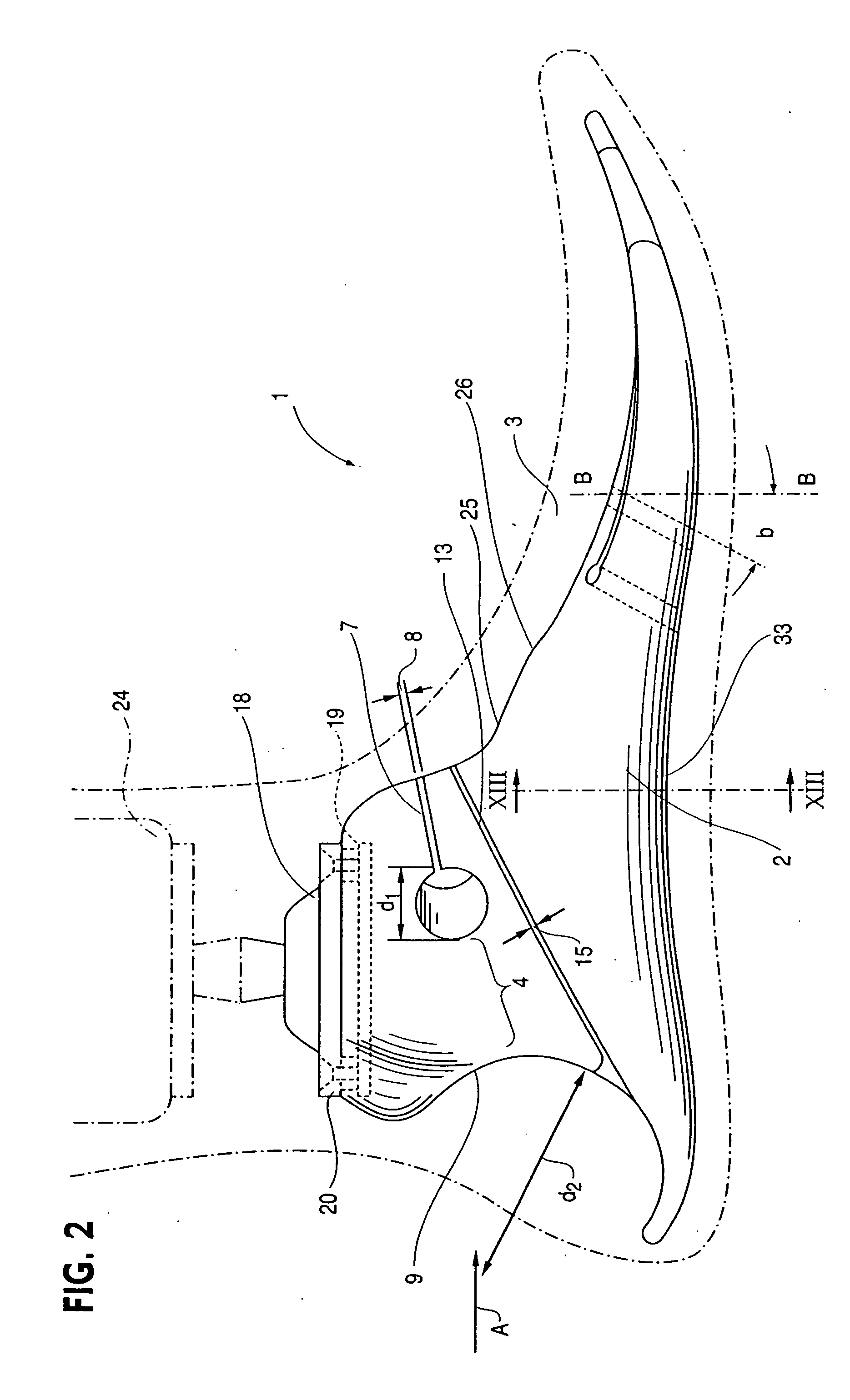Prosthetic foot
a technology for prosthetic feet and feet, applied in the field of prosthetic feet, can solve the problems of mechanical failure and wear of known prosthetic feet, and the cost of producing and maintaining known prosthetic feet is generally high, and achieves the effect of improving the foot and reducing the residual limb to socket shear forces
- Summary
- Abstract
- Description
- Claims
- Application Information
AI Technical Summary
Benefits of technology
Problems solved by technology
Method used
Image
Examples
Embodiment Construction
[0040] Referring now to the drawings, a prosthetic foot 1 of a first example embodiment of the invention comprises a body 2 formed of a resilient, semi-rigid material, plastic in the disclosed embodiment, which is formed with forefoot, midfoot and hindfoot portions 2A, 2B and 2C, respectively. A cosmetic covering 3 of the foot surrounds the body 2 as depicted in FIG. 2. The body 2 in the disclosed embodiment is formed by molding or by pouring the material of the body into a negative mold. However, other processes could be employed to form the body 2 such as machining the body from a solid piece of resilient, semi-rigid material, or by using a combination of molding and machining, for example. The plastic of body 2 is an elastomer, polyurethane in the illustrated example but other plastics or composite materials could be used. The body 2 of the foot is shaped and designed to simulate a human foot's hindfoot triplanar, forefoot biplanar and hindfoot, midfoot and forefoot dynamic respo...
PUM
 Login to View More
Login to View More Abstract
Description
Claims
Application Information
 Login to View More
Login to View More - R&D
- Intellectual Property
- Life Sciences
- Materials
- Tech Scout
- Unparalleled Data Quality
- Higher Quality Content
- 60% Fewer Hallucinations
Browse by: Latest US Patents, China's latest patents, Technical Efficacy Thesaurus, Application Domain, Technology Topic, Popular Technical Reports.
© 2025 PatSnap. All rights reserved.Legal|Privacy policy|Modern Slavery Act Transparency Statement|Sitemap|About US| Contact US: help@patsnap.com



